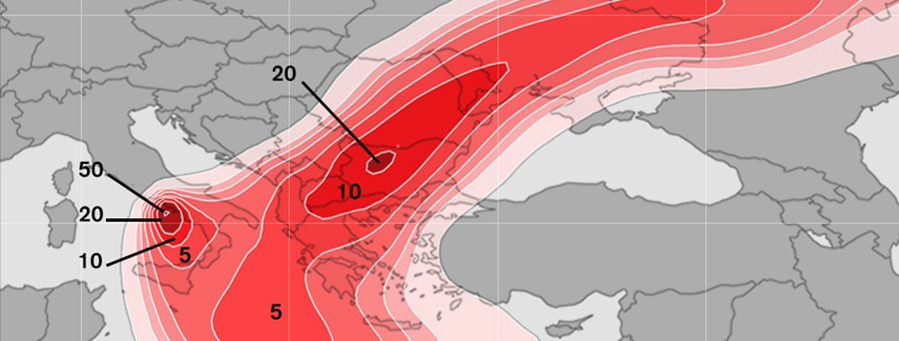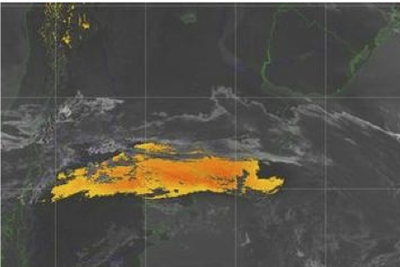
Explosive volcanic eruptions eject large quantities of particulate matter (tephra) at heights from few to tens of km above the volcano vent. Observations and ash dispersal model forecasts are essential to support civil aviation management during a volcanic crisis.
Summary
Tephra (volcanic ash) transport modelling, including model validation, ensemble forecast, operational implementation and estimation of impact on civil aviation. Development and maintainance of atmospheric transport FALL3D, WARIS-TRANSPORT and NMMB/BSC-ASH models and theoretical models for ash aggregation, dynamics of volcanic plumes, gravity currents, and ash resuspension. Assessment of hazard and impact of volcanic ash fallout on local communities and of volcanic ash clouds on civil aviation. Study aerosol feedback effects on regional meteorology using NMMB/BSC-CTM, an on-line global/regional meteorological and atmospheric chemistry model. Code optimization and implementation of transport models in multi-purpose frameworks and porting of parallel software to different architectures. Impact of volcanic ash on civil aviation (SORT-ATM).
FALL3D is an Eulerian model for the transport and deposition of volcanic tephra developed at Barcelona Supercomputing Center in collaboration with the Geo-ELFS group at the INGV, Naples, Italy. The model solves the advection–diffusion–sedimentation (ADS) equation on a structured terrain-following grid using a second-order finite differences (FD) explicit scheme. Different parameterizations for the eddy diffusivity tensor and for the particle terminal settling velocities can be used. The code, written in FORTRAN 90, is available in both serial and parallel versions for Windows and Unix/Linux/Mac X operating systems (OS).
NMMB/BSC-ASH is a new on-line meteorological and atmospheric transport model to simulate the emission, transport and deposition of ash (tephra) particles released from volcanic eruptions. The model predicts ash cloud trajectories, concentration of ash at relevant flight levels, and the expected deposit thickness for both regional and global domains. Its novel on-line coupling strategy allows solving both the meteorological and aerosol transport at every time-step. This coupling strategy aims at improving the current state-of-the-art of tephra dispersal models, especially in situations where meteorological conditions are changing rapidly in time, two-way feedbacks are significant, or distal ash cloud dispersal simulations are required. The model builds on the NMMB/BSC Chemical Transport Model (NMMB/BSC-CTM) developed at the BSC in collaboration with the U.S National Centers for Environmental Prediction (NCEP) and the NASA Goddard Institute for Space Studies.
WARIS is a multi-purpose frame work aimed at solving scientific problems using Finite Difference Methods (FDMs).The framework was designed from scratch to solve in a parallel and efficient way different geoscience problems on a wide variety of architectures. The FALL3D model governing equations have been implemented in the WARIS framework, deploying the so-called WARIS-Transport module.
SORT-ATM is a tool to evaluate the impact of volcanic ash and mineral dust on civil aviation. SORT-ATM merges model forecasts and ATM databases (airports, routes, FIRs and flights) to evaluate impacts based on user-defined criteria: visibility at surface for mineral dust and concentration threshold and maximum engine dose for volcanic ash.
Objectives
- Development of volcanic ash transport and dispersal models.
- Assesment of volcanic hazard and impacts on civil aviation.
- Ensemble forecast strategies.



